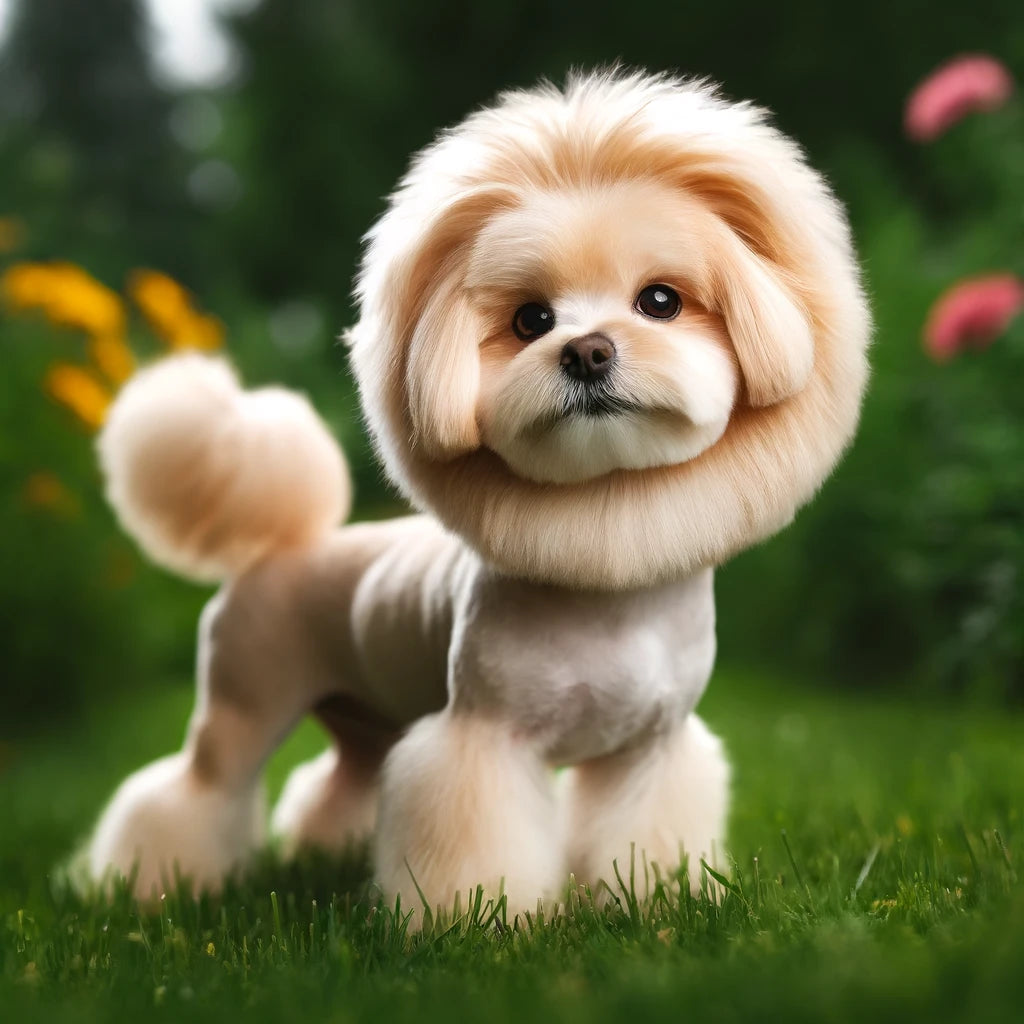Grooming your dog not only keeps them clean and healthy, but it also gives them a fashionable appearance, which may make your walks in the park more fun. In this detailed tutorial, we'll look at several dog haircuts, discuss how to maintain them, and give step-by-step directions for doing these cuts at home.
Popular Dog Hairstyles
1. The Puppy Cut

Ideal for: All breeds, especially Poodles, Maltese, and Shih Tzus.
Description: The puppy cut is a uniform trim in which the dog's fur is clipped to 1-2 inches all over the body, providing a basic, low-maintenance style that keeps canines cool throughout the summer.
Maintenance: Low; brushing and trimming once a month are required to keep the hair short.
2. The Teddy Bear Cut
Ideal for: Shih Tzus, Bichon Frises, and any breed with a softer, puffier coat.
Description: This cut involves trimming the fur to give the face and body a rounded, fluffy appearance, resembling a plush teddy bear.
Maintenance: Moderate; involves regular brushing several times a week to prevent mats and monthly grooming sessions.
3. The Lion Cut

Ideal for: Pomeranians, Chow Chows, and Persians (though it's a cat, this style is popular among dogs with thick manes).
Description: The fur is shaved close on the back half of the body, with the front half, head, and tail left longer to mimic the look of a lion.
Maintenance: Moderate to high; requires careful maintenance to ensure the longer fur does not mat.
4. The Schnauzer Cut

Ideal for: Schnauzers, naturally!
Description: Features a distinctive grooming style with shorter hair on the body and longer hair on the face, ears, and legs.
Maintenance: High; requires regular combing of the longer fur and professional grooming to keep the style crisp.
DIY Dog Grooming: How to Give Your Dog a Puppy Cut at Home
Tools You Will Need:
- Dog clippers with adjustable blades
- Scissors
- Comb and brush
- Dog shampoo and conditioner
- Towels
Steps to Achieve the Puppy Cut:
-
Preparation:
- Bath: Start by giving your dog a bath using dog shampoo and conditioner to ensure the coat is clean and tangle-free.
- Drying: Towel dry and then use a blow dryer on a low setting to completely dry the fur.
- Brushing: Thoroughly brush the fur to remove any knots or loose hair.
-
Clipping:
- Setting the Clippers: Set your clippers to the appropriate length, usually about 1-2 inches.
- Back and Sides: Start clipping from the neck, moving down the back and sides. Ensure to clip in the direction of hair growth to avoid irritation.
- Underbelly and Legs: Carefully clip the underbelly and legs, where the fur can be a bit denser or have a different texture.
-
Detailing with Scissors:
- Face and Ears: Use scissors to carefully trim around the face and ears, shaping as you go to achieve a rounded, even look.
- Paws and Tail: Trim the fur around the paws to prevent slipping and keep the tail neat, either rounded or following the natural tail shape.
-
Final Touches:
- Brush Out: Give your dog a final brush to remove any clipped hairs and style the coat.
- Rewards: Always end the grooming session with some cuddles and a treat to make it a positive experience for your dog.
Frequently Asked Questions (FAQ)
Q1: How often should I groom my dog?
A: It all depends on the breed and style. Generally, a basic trim every 4-6 weeks is recommended, with more regular brushing in between.
Q2: Are there any styles that are particularly beneficial for my dog's health?
A: Yes, keeping your dog's coat short in the summer can help reduce overheating, while longer coats in the winter give insulation. However, be sure that the style does not result in matting, which can cause skin discomfort.
Q3: Can I perform more complex cuts at home?
A: For complicated cuts like the Schnauzer or Lion cut, it may be preferable to speak with a professional groomer, especially if you are a novice. These styles may be complicated, necessitating precise procedures.
Q4: What should I do if my dog gets anxious during grooming?
A: Try to keep the grooming area peaceful and pleasant. To calm your dog, give him goodies and offer gentle reassurance. If the nervousness persists, try seeking professional help from someone who has expertise dealing with frightened dogs.
Q5: How do I know which hairstyle is best for my dog?
A: Consider your dog's breed, coat type, and your ability to keep the style. A competent groomer can offer personalised suggestions based on your dog's individual needs.
Understanding these fashionable dog haircuts and learning how to make a basic puppy cut at home can help you keep your dog looking and feeling well. Regular grooming not only keeps your dog's physical look in good condition, but it also helps you and your pet form a relationship via personal care and attention.


